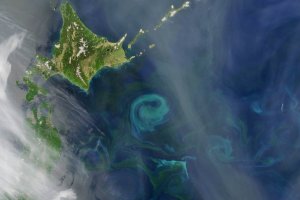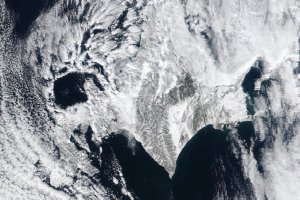Hokkaidō is known for its cool summers and icy winters. Most of the island falls in the humid continental climate zone, a climatic region typified by large seasonal temperature differences, with warm to hot summers and cold winters. There are four distinct seasons here, and the area is characterized by low temperatures and low humidity throughout the year.
The northern portion of Hokkaidō falls into the taiga biome with significant snowfall. Snowfall varies widely from as much as 11 meters (400 in) on the mountains adjacent to the Sea of Japan down to 1.8 meters (71 in) on the Pacific coast. The offshore Siberian breeze drops fresh snow in abundance all winter. This is the reason why the island tends to see isolated snowstorms that develop long-lasting snow banks, in contrast to the constant flurries seen in the Hokuriku region. Due to the humid continental climate zone there is sufficient wintertime precipitation to create deep snow cover. In winter, the high quality powder snow and numerous mountains in Hokkaidō make it one of Japan's most popular regions for snow sports.
The average January temperature ranges from -12 to -4 °C (10.4 to 24.8 °F), depending on elevation and distance from the ocean. Temperatures on the western side of the island tend to be a little warmer than on the eastern. Major winter storms off Siberia help produce hundreds of inches of powder each year. Although all of Japan experiences northwest-to-southeast Siberian winds in the winter, Niseko located in the southwest of Hokkaidō, is internationally renowned for its consistently good falls of the lightest powder snow.
The snowfall usually commences in earnest in November. Early in the month, all of Hokkaidō is covered with autumn leaves, while more snowy days are seen from mid-to-late November. Hokkaido has more snowy days in December. Snow covered roads often melt during the day but freeze again in the evening. February sees continued cold temperatures. In the morning and evening temperatures remain low, but the number of sunny days starts to increase. The Siberian winds are slowly dying down as spring is just around the corner.
Hokkaidō offers a wealth of natural beauty and marked seasonal changes in scenery.
































